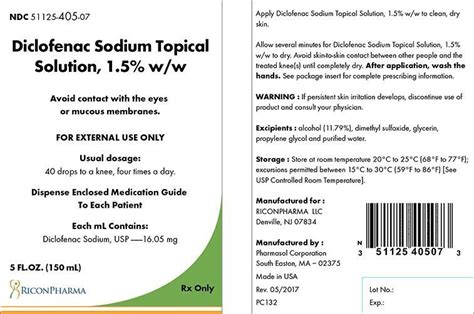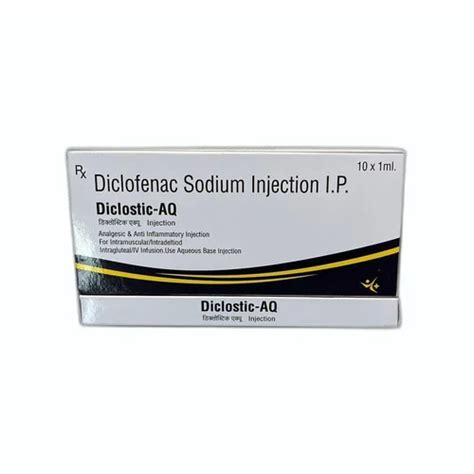Intro
Discover what Diclofenac Sodium is, a potent nonsteroidal anti-inflammatory drug (NSAID) used to treat pain, inflammation, and arthritis, with benefits and side effects, and learn about its topical and oral applications.
Diclofenac sodium is a nonsteroidal anti-inflammatory drug (NSAID) that has been widely used for decades to treat various types of pain and inflammation. It is a synthetic compound that belongs to the phenylacetic acid derivative class of NSAIDs. Diclofenac sodium works by inhibiting the production of prostaglandins, which are hormone-like substances that cause pain, inflammation, and fever in the body. By reducing the production of prostaglandins, diclofenac sodium helps to alleviate symptoms such as pain, swelling, and stiffness.
The importance of diclofenac sodium lies in its ability to provide effective relief from various types of pain and inflammation, including arthritis, menstrual cramps, and other musculoskeletal disorders. It is also used to reduce fever and alleviate symptoms associated with migraines and other types of headaches. With its widespread use, it is essential to understand the benefits, working mechanisms, and potential side effects of diclofenac sodium to ensure safe and effective use.
Diclofenac sodium is available in various forms, including tablets, capsules, injections, and topical creams or gels. The choice of formulation depends on the specific condition being treated and the severity of symptoms. For example, topical creams or gels may be used to treat localized pain and inflammation, while oral tablets or capsules may be used to treat more widespread conditions such as arthritis.
How Diclofenac Sodium Works

Diclofenac sodium is a non-selective COX inhibitor, meaning it inhibits both COX-1 and COX-2 enzymes. By inhibiting COX-2, diclofenac sodium reduces the production of prostaglandins that cause pain, inflammation, and fever. However, by also inhibiting COX-1, diclofenac sodium may increase the risk of stomach ulcers and bleeding, as well as reduce blood flow to the kidneys.
Benefits of Diclofenac Sodium
The benefits of diclofenac sodium include: * Effective relief from pain and inflammation * Rapid onset of action * Availability in various formulations * Ability to reduce fever and alleviate symptoms associated with migraines and other types of headaches * Ability to treat various types of musculoskeletal disorders, including arthritis and menstrual crampsSide Effects and Precautions

To minimize the risk of side effects, it is essential to follow the recommended dosage and duration of treatment. Individuals with a history of stomach ulcers or bleeding, as well as those taking anticoagulant medications, should use diclofenac sodium with caution.
Contraindications and Interactions
Diclofenac sodium is contraindicated in individuals with: * Known hypersensitivity to diclofenac sodium or other NSAIDs * Active stomach ulcers or bleeding * Severe kidney or liver disease * Heart failure or coronary artery diseaseDiclofenac sodium may interact with other medications, including:
- Anticoagulant medications, such as warfarin
- Antiplatelet medications, such as aspirin
- Diuretics, such as furosemide
- Beta blockers, such as propranolol
Uses and Applications

Administration and Dosage
The administration and dosage of diclofenac sodium depend on the specific condition being treated and the severity of symptoms. Typical dosages include: * 50-100 mg orally every 8 hours for arthritis and musculoskeletal disorders * 50-100 mg orally every 8 hours for menstrual cramps and dysmenorrhea * 50-100 mg orally every 8 hours for migraines and other types of headaches * 25-50 mg orally every 8 hours for fever reduction and alleviation of symptoms associated with the common cold or fluConclusion and Future Directions

We invite you to comment on this article and share your experiences with diclofenac sodium. Have you used diclofenac sodium to treat a condition? What were your results? Do you have any questions or concerns about using diclofenac sodium? Share your thoughts and help us create a community of informed and engaged individuals.
What is diclofenac sodium used for?
+Diclofenac sodium is used to treat various types of pain and inflammation, including arthritis, menstrual cramps, and other musculoskeletal disorders.
How does diclofenac sodium work?
+Diclofenac sodium works by inhibiting the production of prostaglandins, which are hormone-like substances that cause pain, inflammation, and fever in the body.
What are the common side effects of diclofenac sodium?
+Common side effects of diclofenac sodium include stomach upset or nausea, diarrhea or constipation, headache or dizziness, drowsiness or fatigue, and increased risk of stomach ulcers or bleeding.
